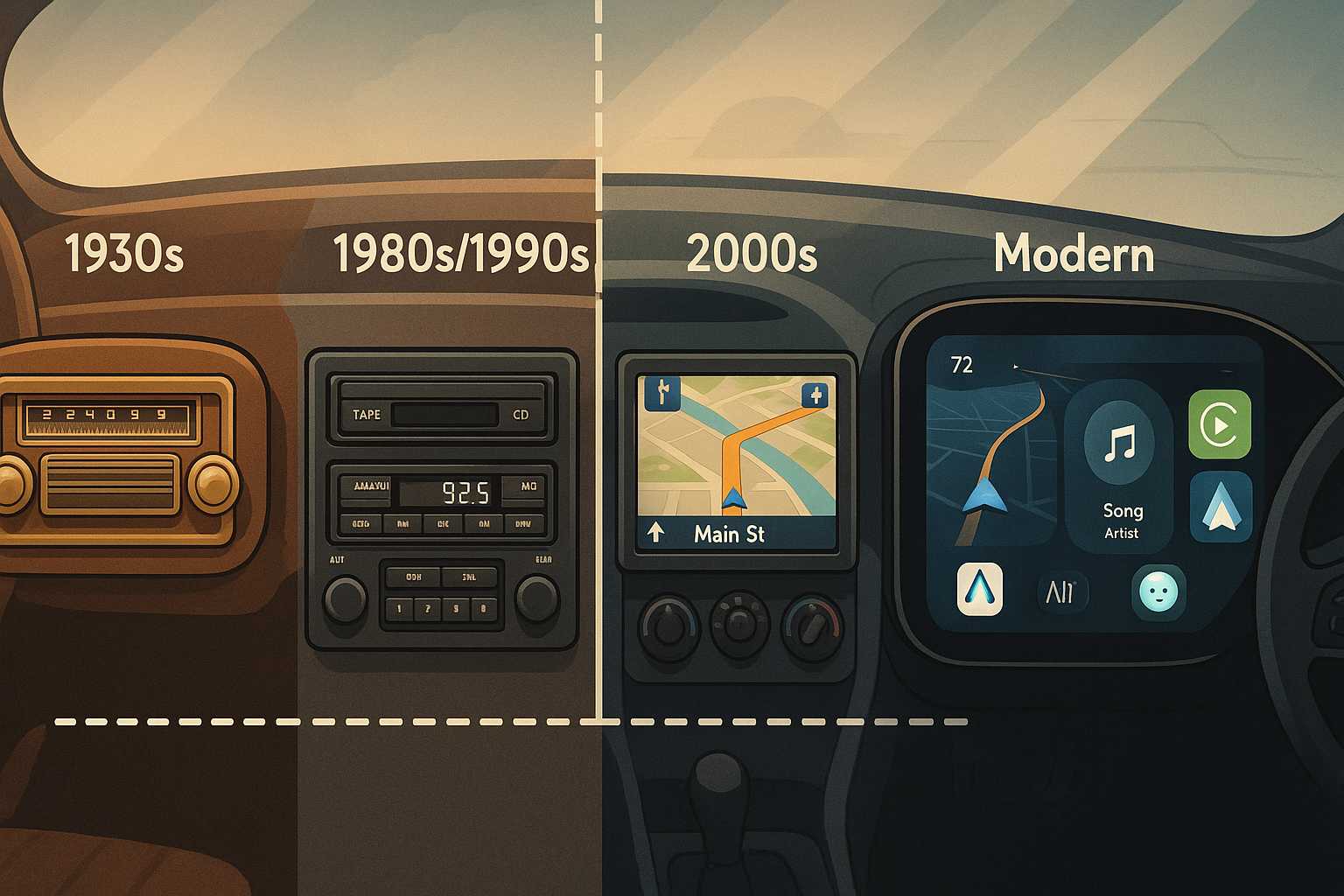The modern automobile is more than just a machine for transportation; it has evolved into an integrated digital space where entertainment, connectivity, and information merge seamlessly. In-car infotainment systems, once simple radios, have transformed dramatically over the past decades, reflecting broader technological trends within the automotive industry.
The Early Days: Simplicity on Wheels
It all began with basic AM radios making their debut in cars during the 1930s and 1940s, offering drivers and passengers a way to enjoy music and catch up on news while on the move. These early systems were built for robustness but were limited in usability and content.
The 1980s and 1990s: Cassettes, CDs, and Early Digital Displays
As consumer tastes evolved, so did in-car entertainment. Cassette players, followed by CD players, provided much greater choice in audio. In the 1990s, the first digital displays emerged, hinting at a more interactive future. The growing ubiquity of portable devices also encouraged some manufacturers to develop systems with auxiliary inputs.
The 2000s: Navigation, Touchscreens, and Bluetooth
The new millennium ushered in navigation systems, touchscreens, and Bluetooth connectivity. GPS navigation revolutionized road trips, reducing reliance on paper maps. Bluetooth allowed hands-free calling, enhancing safety and convenience. Automakers began integrating more advanced controls, setting the stage for the sophisticated systems we see today.
2010s to Today: The Connected Cockpit
Modern infotainment is characterized by large high-resolution displays, voice command systems, seamless smartphone integration (think Apple CarPlay and Android Auto), and persistent internet connectivity. Today’s cars offer streaming music, over-the-air (OTA) updates, and even app stores, turning the dashboard into a true digital hub.
What’s Next: AI and Personalization
Artificial intelligence is poised to make infotainment systems more adaptive and personal. Imagine an infotainment system that anticipates your preferred routes, recommends restaurants, or adjusts in-car climate automatically based on your habits.
In-car entertainment now reflects a broader shift toward connected, intelligent vehicles. As technology continues to advance, expect the line between your smartphone, your car, and even your home devices to blur—with infotainment right at the heart of the transformation.
-Lex


Leave a Reply